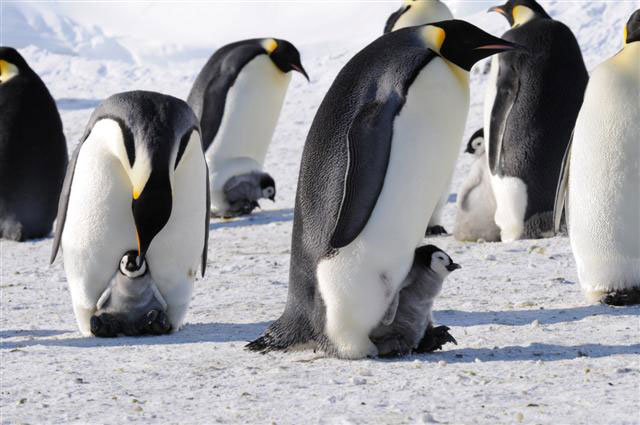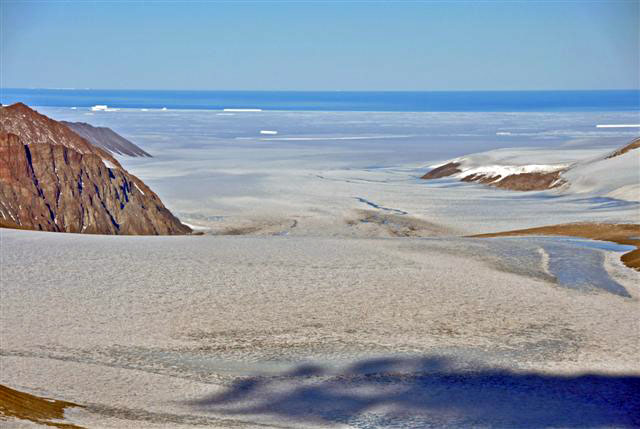|
Still fishingEstablishment of marine protected areas around Antarctica eludes CCAMLRPosted November 21, 2012
An international meeting to discuss marine conservation in Antarctica resulted in several measures to strengthen protections in the Southern Ocean, though much-anticipated decisions to create large marine protected areas (MPAs) around the continent eluded delegates. The Commission for the Conservation of Antarctic Marine Living Resources (CCAMLR) CCAMLR had considered several proposals to set aside vast swaths of the Southern Ocean as MPAs. The commission operates by consensus, meaning that all members must agree before a decision can be adopted, and delegates were unable to reach unanimity. A special meeting of CCAMLR will be held in Germany in July 2013 to continue discussions and negotiations on the establishment of MPAs in Antarctica, according to a press release 
Photo Credit: Melanie Conner/Antarctic Photo Library
A toothfish specimen in the McMurdo Station aquarium in 2002.
Four MPA proposals had been brought forward to the commission. New Zealand and the United States had each proposed to protect parts of the Ross Sea, which has become a popular fishing ground for Antarctic toothfish (Dissostichus mawsoni). During the meeting, the two nations, whose Antarctic research programs collaborate closely, merged their proposals, settling on an MPA of 2.27 million square kilometers. “We hope to gain support from the international community as this important proposal moves forward,” said U.S. Secretary Hillary Clinton The joint MPA proposal had four key goals: conservation of the Ross Sea ecosystem to ensure its current structure and function; creation of a reference area to gauge the effects of climate change and fishing; protection of a representative portion of benthic and pelagic marine environments; and protection of core foraging areas for top predators such as penguins and seals, as well as sites important in the lifecycle of the toothfish. In 2010, the Marine Stewardship Council Toothfish grow to a maximum length of about 1.9 meters, but most fish caught range from about 1 to 1.5 meters. They live up to about 35 years. Scientists have noted that in recent years few if any large toothfish have been captured for research purposes in the Ross Sea. One large specimen was caught this month near McMurdo Station The other proposals included a network of seven MPAs in East Antarctica, brought forward by Australia, France and the EU, which also proposed an MPA in the Antarctic Peninsula. In 2009, CCAMLR established a 94,000-square-kilometer MPA near the South Orkney Islands, which was the first MPA entirely located in the high seas in the area regulated by CCAMLR. 
Photo Credit: Dr. Paul Ponganis/Antarctic Photo Library
Emperor penguin adults and chicks at CApe Crozier, Ross Island, near the Ross Sea.
“Establishing MPAs is a complex process involving a large amount of scientific research as well as international diplomacy,” the CCAMLR press release stated. “ Agreeing on three major proposals for the establishment of marine protected areas, each involving 1.9 to 2.4 million square kilometers proved to be a task needing more time and consideration than was available during the Commission’s eight-day annual meeting in 2012.” The commission did make progress on several other proposals during the Hobart meeting, including:
In the 30 years since CCAMLR was established, the commission has implemented a number of conservation measures. One such measure has reduced seabird by-catch mortality in CCAMLR-managed fisheries from nearly 7,000 seabirds in 1997 to close to zero over the past few years. CCAMLR has also worked to combat illegal fishing. Fish catches taken by unregulated vessels has declined substantially, although estimates of illegal catch are now hampered by vessels using gillnets with unknown catch and effort. |



For USAP Participants |
For The Public |
For Researchers and EducatorsContact UsNational Science FoundationOffice of Polar Programs Geosciences Directorate 2415 Eisenhower Avenue, Suite W7100 Alexandria, VA 22314 Sign up for the NSF Office of Polar Programs newsletter and events. Feedback Form |



